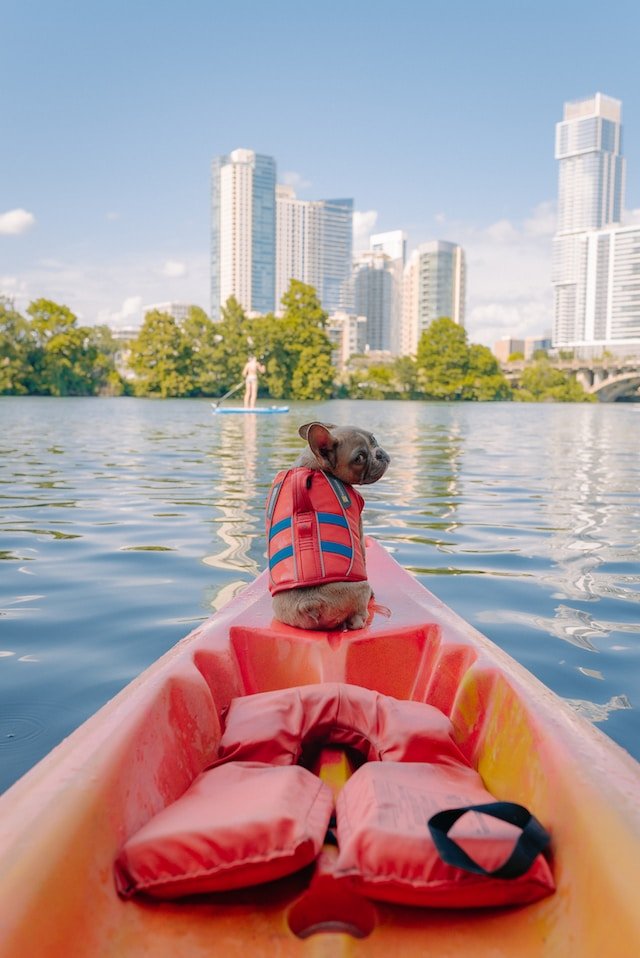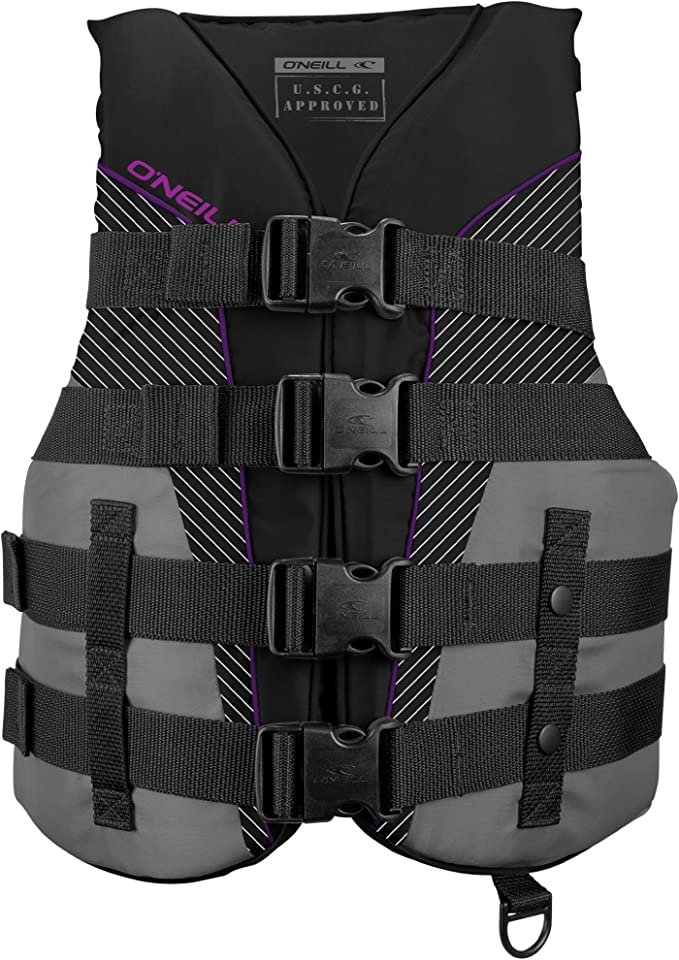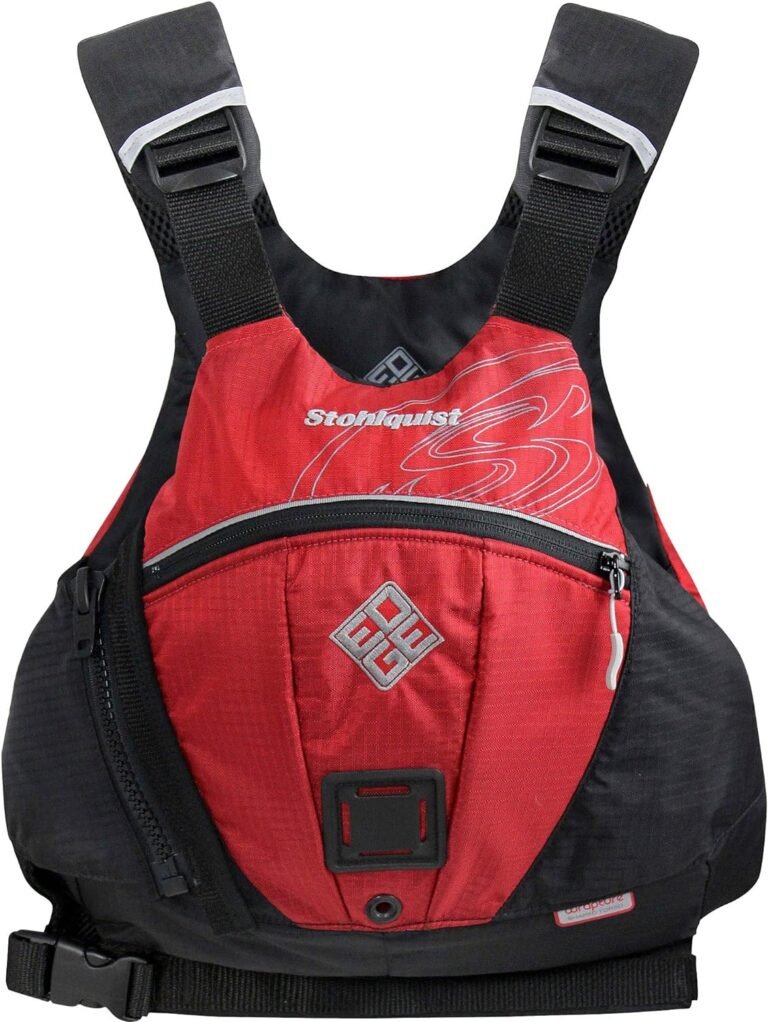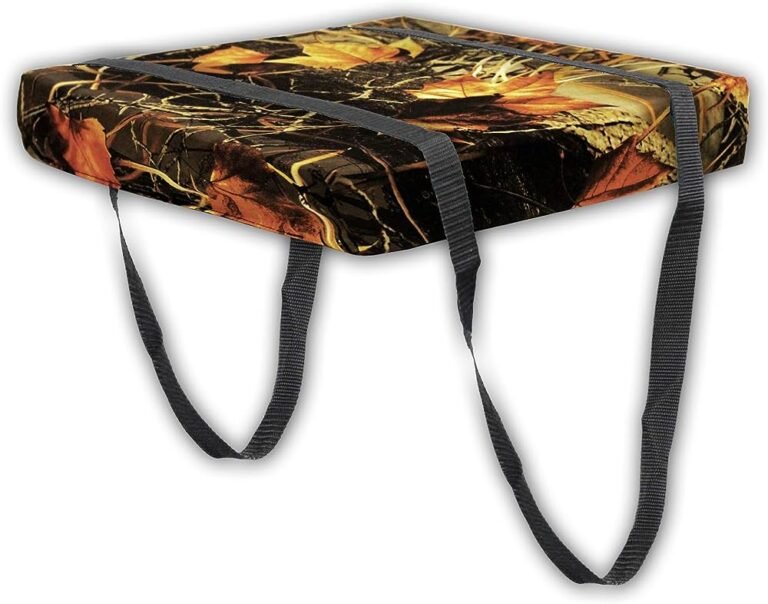¿Qué debe hacer si un chaleco salvavidas tiene un desgarro en la tela exterior?

Pasar tiempo en el agua siempre ha sido una forma de relajarse, pasar tiempo en familia, disfrutar de la naturaleza y hacer ejercicio.
En los últimos años, la popularidad de los deportes acuáticos ha aumentado considerablemente, lo que ha llevado a que cada vez más personas en el agua prueben un deporte u otro.
Naturalmente, la seguridad de las personas es una preocupación, y el equipo de seguridad más utilizado para los deportes acuáticos es el Dispositivo de Flotación Personal (PFD), un dispositivo que te mantiene a flote incluso cuando ya no tienes energía para hacerlo.
Sin embargo, con el uso, este equipo de seguridad eventualmente se deteriora. Lo que haga en esta etapa es fundamental ya que utiliza un funcional PFD es esencial para tu supervivencia en el agua, especialmente si te gusta participar en actividades emocionantes.
En este artículo, analizamos lo que debe hacer si su chaleco salvavidas tiene un desgarro en la tela exterior. Siga leyendo y manténgase seguro en el agua.
¿Qué es un PFD?
Un PFD, o dispositivo de flotación personal, es un dispositivo que usa una persona para proporcionarle flotabilidad y mantenerla a flote en el agua, especialmente cuando termina en el agua inesperadamente, como en el caso de un percance o vuelco de su buque.
Hay muchos tipos diferentes de PFD y, por lo general, están hechos de materiales como espuma u otros materiales flotantes. Los PFD son obligatorios por ley en muchos países para determinadas actividades, como la navegación.
¿Qué debes hacer si un PFD tiene un desgarro en la tela exterior?
Para tu chaleco salvavidas Para mantenerlo seguro en caso de emergencia, debe estar en óptimas condiciones. Eso implica que cualquier cosa que comprometa la funcionalidad de su PFD debe solucionarse tan pronto como se note.
El curso de acción ideal, cuando hay un problema con su PFD, es conseguir uno nuevo, pero es posible que no pueda permitirse comprar uno nuevo. chaleco salvavidas en ese mismo momento.
No se preocupe, no es necesario que abandone su deporte debido a un problema con su PFD. A continuación se analizan cosas que puede hacer para que su PFD sea utilizable hasta que obtenga uno nuevo.
Parchear el PFD
Has leído bien. El mejor curso de acción cuando su PFD tiene un desgarro en la tela exterior y no está listo para reemplazarlo es parchearlo.
Parchar el PFD no sólo le ahorra tiempo sino que también ayuda a reducir posibles costos en el chaleco salvavidas. Si se hace correctamente, podrá utilizar el PFD durante bastante tiempo antes de tener que cambiarlo.
Cosas a considerar al parchear su PFD.
- El desgarro del chaleco salvavidas debe ser en el tejido exterior. Esto significa que el desgarro no debe atravesar el material del chaleco salvavidas ni estar profundamente arraigado en él. Si el desgarro supera la tela exterior, deberá reemplazar el chaleco salvavidas.
- Asegúrese de que el parcheo del chaleco salvavidas lo realice un experto. No se puede exagerar este punto. No intente parchear el PFD usted mismo, excepto si lo está utilizando para practicar cómo parchear un PFD.
- El PFD debe tener un parche que oculte el desgarro en el PFD sin afectar la funcionalidad del chaleco salvavidas.
Si entrega el PFD a un profesional y él hace un buen trabajo, debería tener a mano un PFD utilizable al menos hasta que pueda reemplazarlo. Por otro lado, si el chaleco salvavidas no está bien reparado, el PFD será propenso a sufrir más rasgaduras y, en última instancia, no será apto para su uso.
Pegue el PFD
Otra forma de arreglar un chaleco salvavidas que tiene un desgarro es taparlo con cinta adhesiva. La cinta suele ser cinta adhesiva, pero podría ser cualquier cinta confiable disponible.
Al colocar cinta adhesiva en el PFD, asegúrese de tener cuidado para que el último estado del PFD no sea peor que el actual.
Este método es el menos confiable ya que es fácil cometer un error en la reparación, pero si se hace bien, puede ganar algo de tiempo hasta que reemplace el PFD.
Reemplazar el PFD
La mejor solución posible una vez que notes un desgarro en tu PFD es reemplazarlo. Si bien el costo puede estirar su presupuesto, considere sus prioridades y llegará a la conclusión de que su seguridad es de suma importancia.
Un PFD reparado puede fallarle cuando más lo necesita, y el resultado es una lesión grave y posiblemente la muerte, por lo que adquirir un PFD nuevo es la mejor manera de estar seguro mientras disfruta en el agua.
En última instancia, parchear el PFD o pegarlo con cinta adhesiva son formas inteligentes de retrasar lo inevitable, pero eventualmente debes conseguir un nuevo chaleco salvavidas lo antes posible para garantizar tu seguridad.
Cómo inspeccionar su PFD
Parte del mantenimiento de su PFD es asegurarse de que sea apto para su uso en el agua. A continuación se ofrecen algunos consejos que le ayudarán a comprobar la integridad estructural de su chaleco salvavidas y qué hacer en caso de que se vea comprometida.
comprobar el hardware
Mientras inspecciona su PFD, debe prestar atención al hardware (cremalleras, correas, hebillas, etc.) e inspeccionarlos en busca de daños.
Si hay algún problema con alguno de ellos, es hora de reemplazar su PFD. La razón por la que no se recomienda una reparación es que el hardware dañado casi siempre significa daño al material de su chaleco salvavidas, y eso nunca es una buena noticia.
Mientras lo hace, también debe asegurarse de que las correas de su PFD puedan soportar la presión tirando de ellas con fuerza. Tenga cuidado de no dañarlos.
Inspeccionar las correas
Las correas deben estar en buenas condiciones para que su PFD funcione. Si la correa está rota, rasgada o falta, es hora de conseguir un chaleco salvavidas nuevo.
Grandes desgarros o desgarros
Al inspeccionar su chaleco salvavidas, siempre debe estar atento a posibles roturas y rasgaduras. Si el daño es manejable, puede salirse con la suya reparando el PFD, pero si no, deberá reemplazarlo.
material podrido
Lo creas o no, con el tiempo, el material de tu PFD puede empezar a pudrirse. Puede notar esto como una debilidad en el material de su chaleco salvavidas. Cuando eso suceda, su PFD habrá cumplido su condena y estará listo para ser reemplazado.
Derrames de petróleo
Los derrames de petróleo afectan negativamente la flotabilidad de su chaleco salvavidas, por lo que su presencia en su PFD nunca es una buena señal.
Por su seguridad, es mejor reemplazar su chaleco salvavidas inmediatamente después de notar un derrame de petróleo. No desea correr el riesgo de que el PFD se falle en caso de emergencia, ya que podría costarle la vida.
Cómo guardar tu PFD
Es importante tener en cuenta que muchas veces, el desgarro que ve en su dispositivo de flotación personal es el resultado de malas prácticas de almacenamiento.
Los PFD están diseñados para usarse en agua y, por lo tanto, rara vez se dañan mientras están en uso. Depende de usted almacenar el suyo adecuadamente para garantizar que dure muchos años. A continuación se ofrecen algunos consejos que le ayudarán con esto.
Nunca guardes tu PFD bajo la luz solar directa.
La luz del sol y el material de su dispositivo de flotación no son amigos. Los rayos ultravioleta del sol hacen que la tela de su chaleco salvavidas se desvanezca y se deteriore con el tiempo, así que nunca guarde su PFD a merced del sol.
Su PFD está expuesto al sol cuando está en el agua, no es necesario que soporte la luz solar cuando no está en uso.
Guarde el PFD en un lugar fresco y seco.
Como los lugares con luz solar no se pueden utilizar para guardar su chaleco salvavidas, es posible que se pregunte dónde guardar su PFD. Ahora ya tienes tu respuesta. Los chalecos salvavidas deben guardarse en un lugar fresco y seco, lejos del sol y de la humedad, para resistir el paso del tiempo.
Guarde el PFD en un área ventilada.
Usar un lugar fresco y seco para guardar su PFD no es suficiente. El área de almacenamiento debe estar bien ventilada si no desea que crezca moho en su chaleco salvavidas. Los PFD se utilizan en el agua y, como tales, pueden estar mojados cuando se almacenan.
Un área de almacenamiento bien ventilada garantiza que esta agua eventualmente se seque sin causar efectos adversos (como la descomposición del material) en su chaleco salvavidas. Asegúrese de que su PFD esté siempre almacenado en áreas ventiladas, ya que durará mucho tiempo.
Cuelga el chaleco salvavidas cuando no esté en uso.
Cuando llegue el momento de guardarlo, es posible que tenga la tentación de doblar su PFD y dejarlo en un estante. Si pertenece a esa categoría, sepa hoy que la mejor manera de guardar su PFD es colgarlo.
Doblar su PFD hace posible que quede agua en algunas partes del chaleco salvavidas y eso podría provocar el crecimiento de moho y hongos, lo que sería contraproducente para sus esfuerzos por preservar el PFD.
Por otro lado, colgar su PFD facilita que se seque y evita que el material se pudra o se convierta en el hogar de alguna criatura en su casa.
Limpiar el chaleco salvavidas
Si desea que su chaleco salvavidas dure, debe estar limpio antes de guardarlo. Si ha estado en agua salada, barro, arena o suciedad, lo mejor para usted y su chaleco salvavidas es enjuagarlo y secarlo antes de guardarlo. No hacerlo sería condenar a su PFD a una corta vida útil.
Tener un dispositivo de flotación personal (PFD) es indispensable para estar seguro en el agua. Por lo tanto, no sorprende que sea un equipo de seguridad obligatorio para todos los que deseen pasar tiempo en el agua.
Sin embargo, para que un chaleco salvavidas lo mantenga a flote, tiene que estar en buenas condiciones, y los desgarros en la tela de su PFD son más peligrosos de lo que parecen. El mantenimiento es clave para proteger la integridad estructural de su chaleco salvavidas, especialmente cuando llega el momento de guardarlo.
También debe inspeccionar su PFD periódicamente para asegurarse de que esté en buenas condiciones. Finalmente, asegúrese de reemplazar el PFD si ya no es seguro usarlo. Esté seguro y diviértase en el agua.






